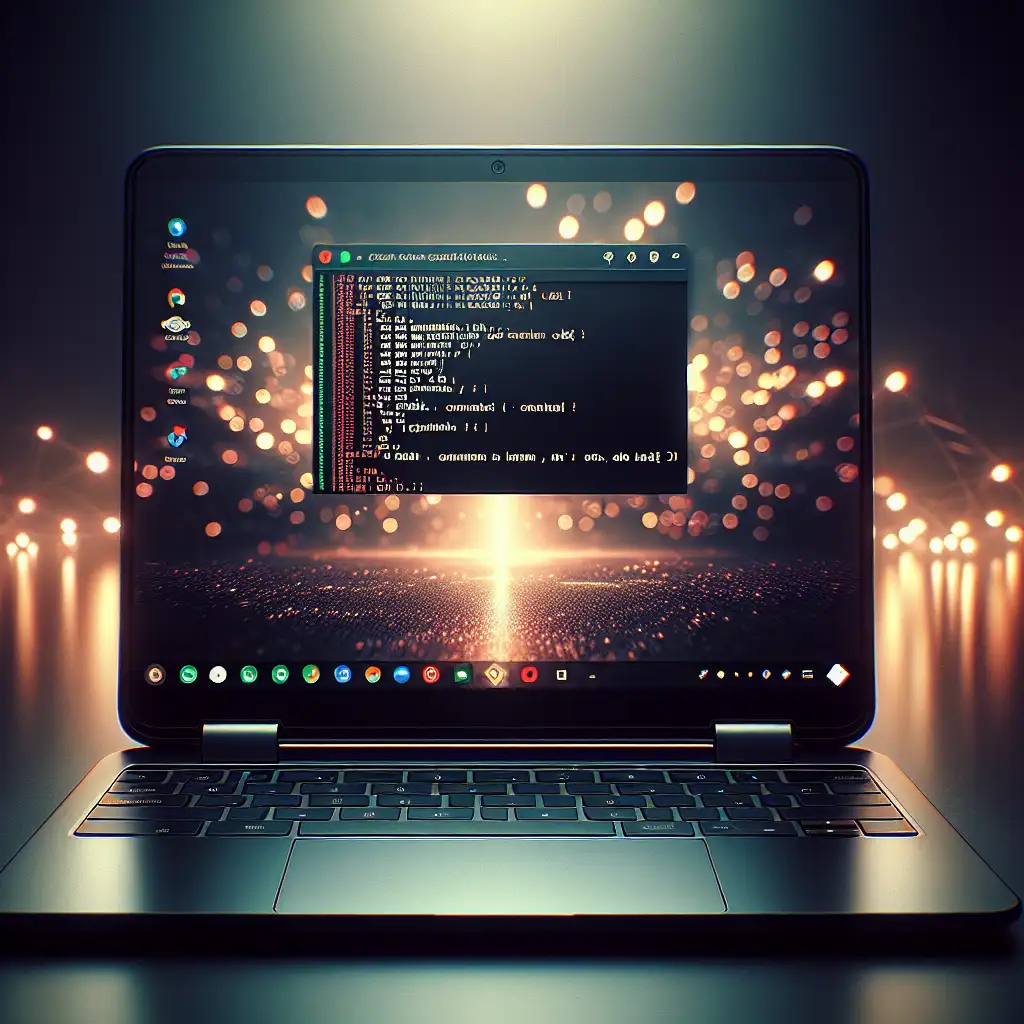Chromebooks as Linux Dev Workstations: Efficient Crostini Setup for the Real World
Turning a Chromebook into a Linux development environment is no longer a parlor trick — Crostini’s containerized approach provides sufficient isolation and access to standard tools, without the fragility of dual-boot hacks or Crouton scripts. Experienced developers can get a full Debian-based stack running on commodity hardware, with minimal hit to battery life and sandboxed separation from Chrome OS.
Initial Hurdle: Device Support & Compatibility
Not every Chromebook supports Crostini, and not every hardware profile runs it efficiently. Identify support before wasting time.
| Device Released | Likely Supported? | Notable Exceptions |
|---|---|---|
| 2019–present | Yes | ARM-based models vary |
| 2018 | Some | Low-end Celeron chips |
| 2016–2017 | Rarely | Mostly unsupported |
Check for “Linux (Beta)” under Chrome OS settings, or run:
chrome://flags
Search for #enable-crostini. If not present, Crostini is unavailable — end of story. Don’t waste hours chasing arcane workarounds on unsupported hardware.
Additional reference: Google’s Linux on Chromebook documentation.
Enabling Crostini: Container Initialization
- Open Settings from system tray (
bottom-right clock). - Scroll down. Locate
Linux (Beta)and select Turn on. - Allocate disk (8–16GB is reasonable for serious dev work).
- Confirm setup.
Crostini provisions a Debian container using LXD. Result: you get /home/$USER in a namespaced guest OS. Under the hood, Crostini abstracts away most cgroups and network bridge details — but mounting external volumes still involves quirks.
Gotcha: The initial container is Debian (typically stable branch). If you need Ubuntu tooling, consider chroot or Podman workaround — not covered here due to complexity and increased attack surface.
Baseline: System Package Hygiene
Open the Linux Terminal. Mandatory first run:
sudo apt-get update \
&& sudo apt-get dist-upgrade -y \
&& sudo apt-get autoremove -y
Dist-upgrade ensures dependencies get proper attention; skip it and you’ll hit stale package issues with out-of-tree PPA software.
Common failure:
W: GPG error: .... NO_PUBKEY ...
Fix by importing relevant keys or purging suspect PPAs.
Core Tooling: Developer-Grade Stack
The essentials depend on your stack, but a baseline for cross-language dev would be:
sudo apt-get install build-essential git curl wget vim jq -y
build-essential: gcc/g++/make. Requirement for C, C++, some Python pip builds.git: Source code versioning.jq: JSON CLI parsing — useful for API interactions.vim: If you know, you know. Swap for nano if you must.
Real-World Example: Node.js + npm
Avoid ancient Debian repository binaries. Use Nodesource for v18.x (current LTS):
curl -fsSL https://deb.nodesource.com/setup_18.x | sudo -E bash -
sudo apt-get install -y nodejs
$ node -v
v18.20.2
$ npm -v
9.8.0
If you see mismatches, check your /etc/apt/sources.list.d/ — sometimes old NodeSource entries linger after major OS upgrades.
Enabling GUI Editors (VS Code and Others)
Text-based workflows are robust, but sometimes a GUI IDE is faster. VS Code can be installed natively inside Crostini, but note: certain extensions requiring inotify- or Docker-level access may not function as on bare metal.
Install — VS Code:
wget -qO- https://packages.microsoft.com/keys/microsoft.asc | gpg --dearmor > microsoft.gpg
sudo install -o root -g root -m 644 microsoft.gpg /usr/share/keyrings/
sudo sh -c 'echo "deb [arch=amd64 signed-by=/usr/share/keyrings/microsoft.gpg] https://packages.microsoft.com/repos/vscode stable main" > /etc/apt/sources.list.d/vscode.list'
sudo apt-get update
sudo apt-get install code
Launch from Terminal with:
code .
Known Issue: Crostini does not support GPU acceleration for X11 — graphical apps can lag on animation-heavy UIs.
Containers Inside Containers: Docker with Crostini
Things get meta; Crostini itself runs Linux in a lightweight VM. Docker via docker-ce is possible, but expects nested virtualization. Some consumer ARM Chromebooks and low-end Celerons lack this, causing failures like:
Cannot connect to the Docker daemon at unix:///var/run/docker.sock. Is the docker daemon running?
On x86_64 with KVM:
sudo apt-get install ca-certificates apt-transport-https gnupg2 software-properties-common -y
curl -fsSL https://download.docker.com/linux/debian/gpg | sudo gpg --dearmor -o /usr/share/keyrings/docker.gpg
echo "deb [arch=amd64 signed-by=/usr/share/keyrings/docker.gpg] https://download.docker.com/linux/debian $(lsb_release -cs) stable" | sudo tee /etc/apt/sources.list.d/docker.list
sudo apt-get update
sudo apt-get install docker-ce docker-ce-cli containerd.io -y
Grant non-root execution rights:
sudo usermod -aG docker $USER
Caveat: Restart your container or logout/in for group change to apply.
Verify isolation:
docker run --rm hello-world
Non-obvious tip: Want better isolation or alternative containerization? Podman runs rootless with less friction, though you’ll miss some Docker Compose workflows.
File Sharing, Data Location, and Backups
Files placed inside Crostini’s $HOME are container-local and invisible to Chrome OS by default.
To share folders:
- In Files app: right-click a folder → Share with Linux.
- Access in Linux at
/mnt/chromeos/MyFiles/<your-folder>
Note: Symlinking shared directories (ln -s) works, but path discrepancies can break git or npm scripts with hardcoded locations.
Backups: Rely on remotes. For critical code, push regularly to a Git remote. For documents, consider rclone with Google Drive:
sudo apt-get install rclone -y
rclone config # Follow the prompts for Google Drive
Conclusion
Crostini transforms the Chromebook from a browsing appliance into a practical dev node, suitable for CI prototyping, cloud SDK work, and even some light container development — provided hardware support is in place and you accept the I/O limitations of running nested containers.
Some workflows—deep Docker networking, system call–intensive tools, GPU-accelerated builds—will still hit sandbox boundaries. For ~80% of modern web, Python, or CLI dev tasks, Chromebooks deliver an affordable, secure, and low-maintenance Linux platform.
Note: If you run into issues with IDE integration, networked shares, or flaky Crostini updates, consult the Crostini GitHub issues. Not every edge case is smoothly documented by Google.
Feedback or advanced use case requests? Leave a specific scenario for community review.
